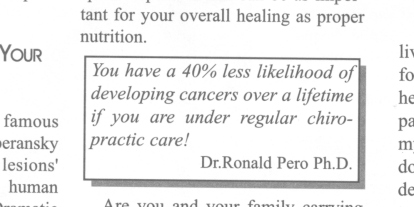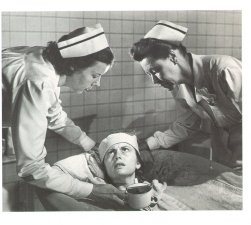Universities in Canada got 60% of their funding from the government in the 1960’s. Now they get 40%. The rest comes from tuition and corporate donations.
The Corporate sponsorship is disturbing.
Apparently, according to the Canadian Association of University Professors, many of these agreements are secret, especially in regard to intellectual property rights. It was this kind of agreement that led to the University of Toronto trying to silence researcher Nancy Oliveri when her research showed that there might be harmful side effects of a drug produced by Apotex.
In a related story, a professor at McMaster University imposed a new policy on all researchers at that facility: no meetings with representatives of drug companies. Why? Because he felt that medical research was becoming compromised by the intermingling of the interests of the drug companies with those of the universities and the medical profession itself.
Perhaps the most laughable slogan of the entire 1980’s was pet phrase of Nancy Reagan’s: “Just say no to drugs”. Just say no to drugs? Ritalin! Valium! Prozac! Viagra! Lithium! Etc. Etc. Etc. We are the most drug-addled society on earth! Say “no”? And bring the stock market crashing down?!
Our society loves drugs. Institutions love them because violent patients can be sedated into harmless mindless sacks of inert flesh. Doctors love them because they provide convenient and speedy personality modifications to persistently annoying patients, and spare them the aggravating ordeal of actually trying to find a real remedy. Drug companies love them—naturally—because they provide incredible profits, since they can charge far in excess of the actual cost of the chemicals in the prescription, to cover—ha ha—research and development. Research scientists love them because drug companies provide them with millions of dollars to conduct research to arrive at just that conclusion (and if they don’t reach that conclusion—see above—the money is withdrawn).
So what’s with this “just say no” campaign? Well, you see, those poor inner city blacks don’t play by the rules. First of all, their drugs don’t include a healthy royalty to some large pharmaceutical firm (just imagine their apoplexy had Nancy Reagan added—”and let’s all try to do with a little less Prozac and Valium ourselves, shall we?”). Secondly, they haven’t developed this wonderful rationale of how stressed out they all are and how they’ve all seen so many psychiatrists and been to all the doctors and just can’t get over this severe depression that’s been limiting their ability to work, you know… The truth is this: in the U.S., blacks constitute 14% of the drug-using population, but they constitute 58% of those convicted for drug use. Look at those numbers carefully. Think of all the movies and tv shows you see about drugs and crime. Think about the reality. The war on drugs is the war on black America. And this war cost $18 billion a year (Harpers Magazine, November 1999). And it is the most one-sided debacle in U.S. history. It has been lost over and over again but America continues to fight it because it’s a winner as an election issue.
It is at moments like this I feel somewhat pessimistic about the human race.
There is a pretty good argument to be made that marijuana, especially, is illegal today because it provides the same sort of hit that Prozac and Valium provide, but at much, much less cost. In fact, you could grow it yourself in your backyard, if the police would let you. A similar argument could be made for cocaine. So, even though I feel pessimistic, I must admit that there are signs of hope. In seven states, voters have indicated, by substantial margins, that they approve the use of marijuana for medical purposes. Representative Bob Barr, in fact– he of impeachment fame– used some nefarious and obscure loopholes to prevent the results of the vote in the District of Columbia from becoming known. When it was finally released, 70% of the voters supported medical use of marijuana. But Mr. Democracy, Bob Barr, has blocked the implementation of the law on a technicality.
It might strike you as surprising that it is only recently in human history that drugs like Cocaine and marijuana have been made illegal. The prohibition of these and other “recreational” drugs coincides perfectly with the rise of the large pharmaceutical companies (who also tried to ban or hobble sales of herbal remedies).
Ah, you say—but aren’t those evil, illegal drugs addictive? Precisely. Why some of them are almost as addictive as, say, lithium. In fact, many of the heavy duty, most frequently-prescribed pharmaceuticals are at least equally addictive.
So what am I saying?
First of all, I am not saying that drug use is good. Get that clear. I don’t drink more than two or three beers a YEAR myself. I dislike anything that messes with your mind. And I certainly don’t use any prescription drugs and whenever I hear of someone who is depressed or disturbed, I hope they find some way to deal with problems that does not involve pharmaceuticals.
However, just as Prohibition of alcohol failed, the war on drugs has failed. And just as most people came to realize that Prohibition did more damage than good, people should come to realize that the war on drugs does more harm than good. The war on alcohol produced powerful criminal organizations that branched out into prostitution, gambling, and murder. Does that sound familiar?
As shocking as the idea sounds, the fact is that some countries have already tried legalizing drugs. In Holland, marijuana and hashish are freely available. And surprise, surprise, more adolescents try marijuana in the U.S. than they do in Holland!
That drugs like cocaine and marijuana should be legal? Well, think about it. Alcohol, in terms of sheer quantity, does far more damage to our society than marijuana. Yet it’s perfectly legal. In fact, it is downright easy for any teenager to get a six pack or a bottle of wine.
We did try banning alcohol once too. Of course, we all know how disastrous that was, and how it led to the development of powerful criminal organizations in North America that branched out into other forms of crime and plagued our society for years afterwards. Does that sound familiar?
Now, the U.S. Supreme Court, featuring embarrassingly second-rate minds like Antonin Scalia and Clarence Thomas, appointed during the twelve years of Republican Administrations between Carter and Clinton, have been steadily eroding constitutional rights protecting citizens from “unreasonable search and seizure”. Police in helicopters can now peer inside your windows, and officers can search your car just because they feel like it. What does this mean? In California, according to Harper’s, an elderly grandfather was shot twice and killed by police who burst into his house in a hail of gunfire searching for a suspect who had lived next door fifteen years earlier. In New York, a mentally retarded, menstruating young girl was dragged naked from the shower and hand-cuffed while police searched the house. Again, no drugs were found.
Nor were any apologies offered. Why should we apologize? We’re the police! We’re in a war on drugs! You don’t apologize to civilian casualties during a war!
And those two cases are just the tip of the ice berg. Under the Supreme Court’s relaxed rules on search and seizure, it has become very profitable for police to pull suspects over the side of the road, seize their cars and property, and leave it to the hapless citizen to “prove” that the property was not used for the purpose of drug-dealing. Not every citizen is smart enough to respond within the 10 days allowed, or rich enough to afford a lawyer, or patient enough to challenge the constipated U.S. criminal court systems. It’s easier, quicker, and safer to please guilty to a reduced charge and turn snitch, thereby providing the police with fresh leads on new property to seize.
It’s utterly incredible, contemptible, and outrageous. Why isn’t this on the front pages of the newspapers, the lead story on television?
Because there’s no sex.
Hollywood stars can afford lawyers.
Everyone has been convinced by successive administrations that drugs is the number one problem in our society and nobody– not Al Gore, not George Bush Jr., not Bill Bradley, not even John McCain– has the guts to stand up to his juggernaut of imbecilic brutality.



